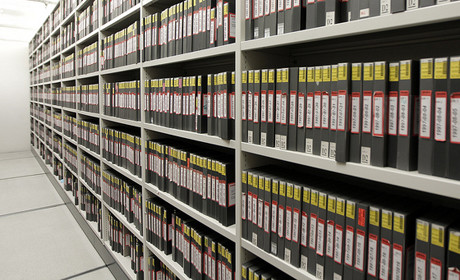
Archives have great potential for news organisations, as they can enrich reporting and provide better context to stories. However, the process of digitising older content has been a challenge for many publishers because it requires considerable financial and human resources.
Earlier this year, Reuters announced it was partnering with ITN Source to make historical archive footage available online. The project, to be completed in 2016, includes Reuters News clips dating back to 1957 and cinema newsreels from 1910 to 1959.
"We are bringing our archive to the centre," said Tim Redman, head of archive at Thomson Reuters, "and this is a great opportunity to complete our end to end news service, making text, pictures and video available on the same platform."
Over 115,000 clips from the vaults have been digitised, bringing the Reuters archive to almost half a million video clips when added to those recorded after digital storage became the standard in 2006.
This includes footage from a 1964 beer drinking championship in London; 'Snow White', the only albino gorilla in captivity performing tricks; and a man being set alight to demonstrate a new fire extinguisher, among others.
The digitisation has also revealed previously unknown content, such as a 1963 documentary about newsgathering filmed by cameramen around the world, as well as war footage that film makers can use to give context to events.
"The complexity of the process has more to do with logistics than anything, as you need to be able to retrieve, handle and select the material", Redman told Journalism.co.uk.
Even if an archive is very well referenced, with tags and metadata all in place, "compiling the right version to digitise is only one of the challenges", he said.
Another challenge was discovering the way in which the material had been stored and used over decades, but once a methodology was developed last year, it became easier to replicate the approach.
Reuters is mainly processing two types of material. Videotapes are "more straightforward to digitise" and only require establishing which category and year the footage belongs to before uploading to the website. Film rolls are more sensitive and harder to compile, however, as they need to be "opened, processed and electronically digitised".It's very satisfying to have material that is not literally locked away in a cabinetTim Redman, Reuters
According to Redman, Reuters prioritises content by working backwards from the oldest material, but also by looking at anniversary years and catering to public demand. He believes that "in the archive business, it's hard to know what will be needed" and rather than following a particular trend, such as a certain event, publishers should digitise all their content.
"It's very satisfying to have material that is not literally locked away in a cabinet", Redman said. However, he advised not to underestimate the effort this process involves, as "technical costs might be reduced, but the human costs still need to be invested in".
His advice to publishers who have yet to digitise their archives?
"Bite the bullet," he said, "plan hard and take the plunge sooner rather than later."
Free daily newsletter
If you like our news and feature articles, you can sign up to receive our free daily (Mon-Fri) email newsletter (mobile friendly).
Related articles
- 40 essential newsletters every journalist should read
- How Reuters, Newsquest and BBC experiment with generative AI
- From Reuters to The New York Times, Big Oil pays 'most trusted media brands' to push greenwashing
- What do audiences need from climate journalism?
- How Reuters uses AI to speed up discoverability of video news content











